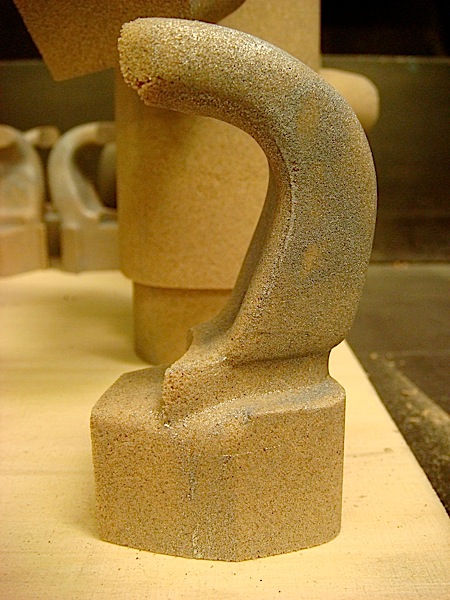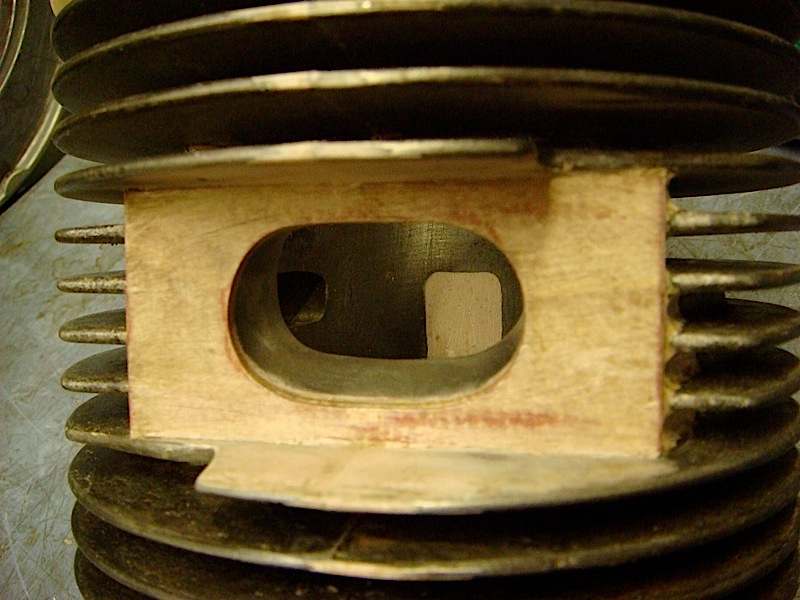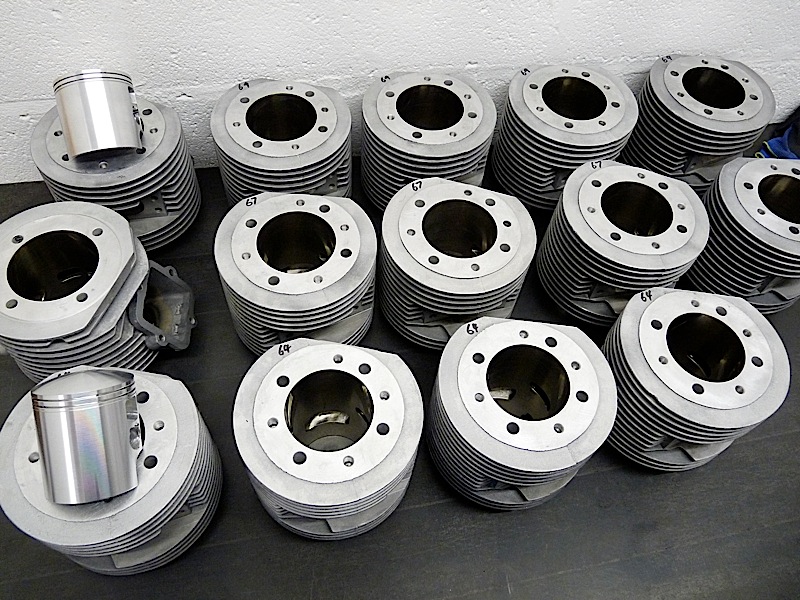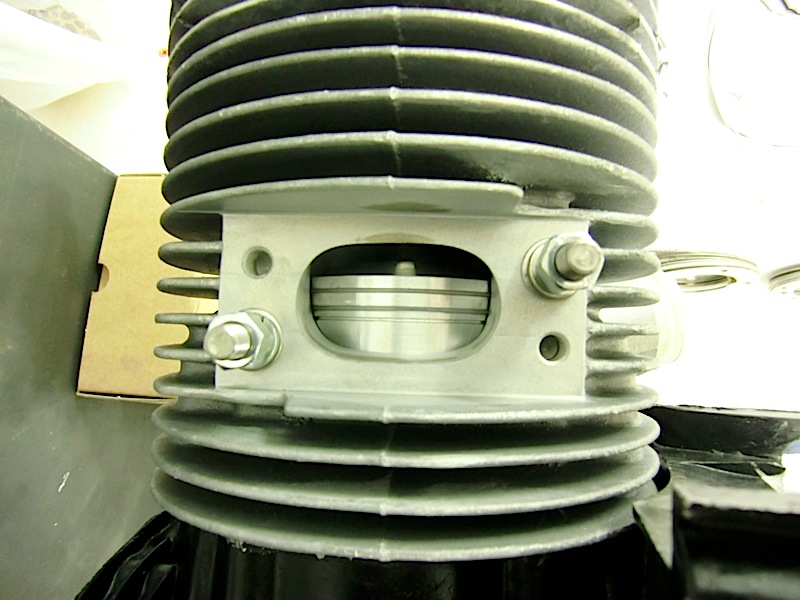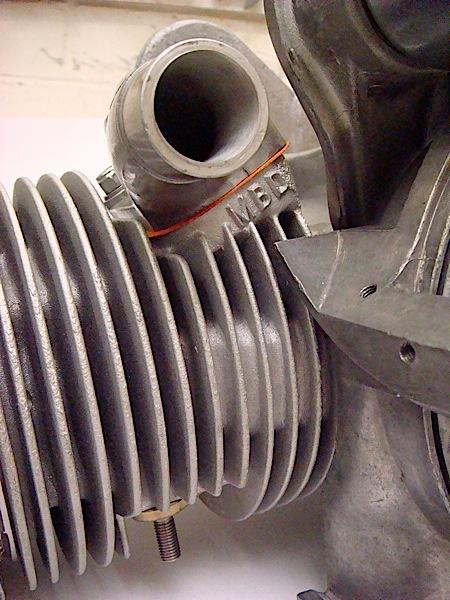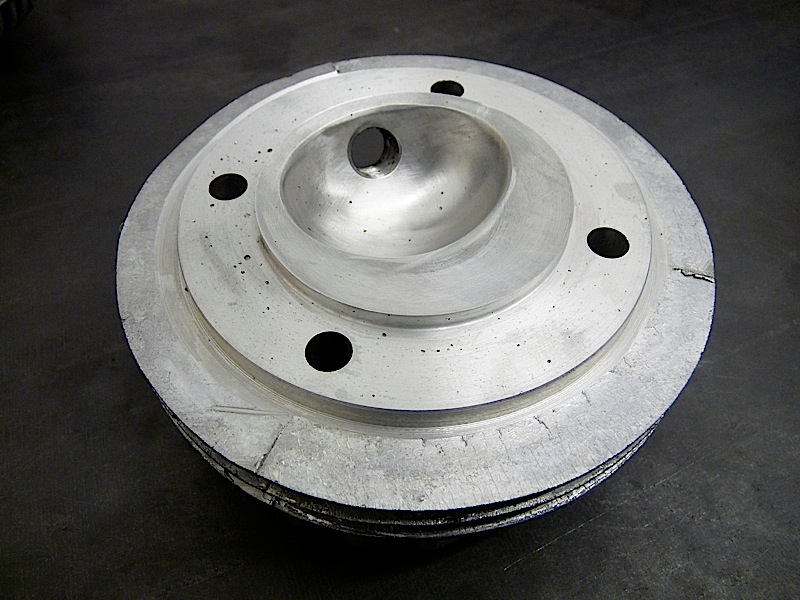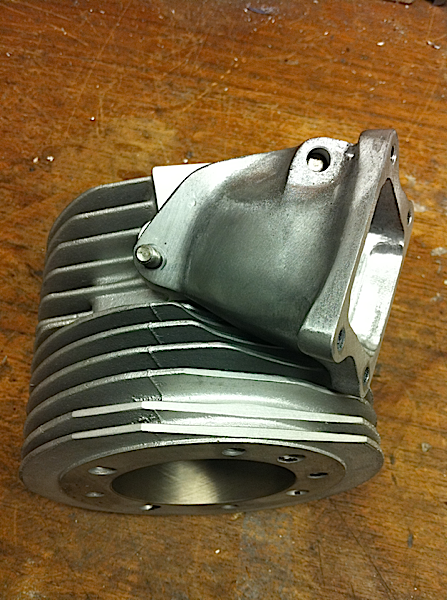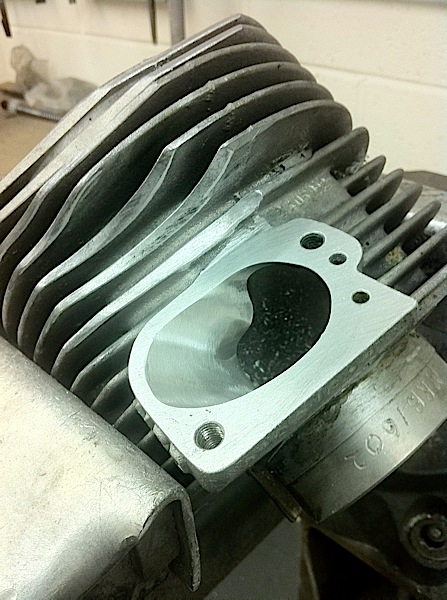LARGE BLOCK MB UK MADE RT 200 – 250 CYLINDERS
This is the original article on our UK made MBD Race-Tour Large block cylinder kit, today we make the MBgm version . Most of the writing is the same but there are differences between the two if you care to read about them.
We first looked into making a cylinder in the early 1990’s based on an alloy cylinder, iron liner and Honda 205 piston. The costings at the time was too expensive even with Taffspeed Racing interested in doing a join venture. Looking back I wish we did, it was cheap compared today. We looked at the cylinders at the time, there was plenty of old Innocenti, Spanish and Autisa cylinders around which were made in to Honda 205 kits, SIL Factory cylinder kits and Asso pistons were plenty full and we had the TS1 kit. By today’s standards they were cheap options and Honda 205 piston was around £45, the last I asked they were £155 20 years later, doing a UK made cylinder kit wouldn’t have competed in price. Trends come and go, we’d had the TS1 for five years, it was a time when people were going back to standard looking mild tunes in restorations.
Over that period of time there has been a number of cylinder kits listed elsewhere. These had good and bad points, we could find improvements on every cylinder and couldn’t understand why tuners, designers, manufacturers would go to the effort of producing a cylinder kit that only just worked a bit better than standard when, if done correctly could have run much better and shown more power or have a better spread of power.
Other peoples products have given us so much trouble in the past that we found the need to produce our own branded MRB and MB products. Our MB Race-Tour range………. was based on parts made with an engineering back ground and on the fact that these parts where aimed at improving performance which could be used in high mileage touring or full Race engines, hence Race – Tour! Over the years trends were coming and going as they do, a new cylinder kit always becomes the NEW IN kit of the moment. It has been the TS1, Rapido, SR, RB, Mugello’s, Avanti, Super Monza or GT kit. You could say some were high maintenance kits requiring special carbs, exhausts and upgraded internals. Only three resembled anything like a mild to Stage 5 touring tune, these were the Rapido’s, Mugello’s and SR kits, but these used miss matched port timings and were not as good as a decent Stage 4 or 5 tune. The Rapido, Mugello, TS1, RB, suited the Large Block casings, we believed there was a market for a real kit that worked on a standard engine or a totally upgraded engine.
We looked at what people really wanted, we were all getting older, fatter, un fit and lazier, our experience and feed back was most people wanted to get form A to B ‘Reliably’ with ‘Drive-ability’ and have ‘Ride-ability’ all very important and totally over looked by other tuners! Most customers didn’t want to do more than 70mph, they wanted improved fuel economy in this very expensive day and age. And this is where our Race-Tour cylinder fitted in.
The basis of the kit and tune was nothing new, we used well proven port timings from the early 1980’s. We had done hundreds of these tunes and when done right and set up right most were quicker than a TS1 but had more rideability and driveability!
I had wanted to reproduce a new standard-ish cylinder for many years, believe it or not we couldn’t find a standard genuine untouched Italian GP200 cylinder that someone would let us have for a pattern. There were plenty of damaged or pattern cylinders but the best basis was always a good Sx or Gp Italian cylinder. Those that came our way the customer wanted and wouldn’t sell! Until a chance visit to my accountant and Scooterist in Kent. Routing through his garage there was a standard barrel sat there doing nothing but collecting dust! And so we had one at last, the basis for a new or not so new kit………….. most, including dealers said there was a market for a standard looking Alloy cylinder, of course we had the Mugello and Rapido but they altered the port timings for the worse.
I had always developed one off cylinders including Liquid Cooled cylinders from 1982 and many other one off cylinders looking towards the future that came to nothing but used lots of development and time, but this has gained valuable experience like no other.
Whatever had to be made it had to be simple, which is always best for us and the customer! Do anything beyond where the customer was lost or required specialist workmanship then the design was not a good idea.
With an old Italian cylinder in my hand, I had to think what it had to do to tick all the boxes for Scooterists who preferred touring/plodding over racing
- Carb on the standard left hand side working with carb sizes from 18 – 35mm with no mods apart from matching an inlet manifold
- Work with any exhaust standard or performance using standard oval port flanges
- One cylinder casting to suit Small Block 125, 150, 175 and Large Block 200 casings
- Work with a standard crankshaft or full long stroke race spec crankshafts with no machining
We wanted it to have these improved specifications
- Alloy cylinder to run cooler using modern strengthened aluminum specially treated to have no casting holes, heat treated and precision CNC machined
- Ceramic plated for long lasting friction free running, using our universal RT pistons with varying sizes from 64mm to 71mm with 0.5mm increments
- Use revised MRB retro old skool port timings
- Easily modified transfer feeds to match standard or existing over sized casing transfers
- Use 4 exhaust studs or only use the 2 standard studs depending on using a standard exhaust flange or an improved MB 4 stud flange
To do this and look at long term reliability and power they had to be designed with
- Porting specs for high powered touring, with reshaped exhaust port, inlet port and transfer ports
- Extra material for higher spec Road or full Race tuning
- Casting had to have 200 large block cylinder same as small block cylinder, basically a 200 cylinder on a small block
- Use 200 Inlet stud spacing on both small and large block cylinders
- Improved casting thickness for anti warping around the ports, cylinder head and base faces
- Extra 4 studs…….. if required to tighten the cylinder head
- Cylinder head machined so it drops into the bore to centralize squish clearances and prevent gaskets blowing allowing gaskets to set different squish clearances depending on stroke of crank
- Improved fuel economy from using old style tunes saving money paying for the kit long term
- Allow for Reed valve tuning as an extra at a later date
Together with all this they needed these advantages
- Work with standard 39mm crown height pistons using standard 107 or 110mm con rods
- Work with low compression 30/31/32mm crown height pistons to suit cranks with 115/116/120mm con rods
- Work with different base gaskets or packers and head gaskets to make port timings adjustable to suit Touring or Road-Race use and be the most versatile Lambretta cylinder kit ever made.
Based on all this information, I took the original cylinder and gave it the MRB Stage 4 – 5 modern tune. I did machine boost ports above the inlet and reshaped the inlet port but wasn’t happy so ended up refilling and reshaping it. The areas of a standard Lambretta cylinder that fails was built up top and bottom and around the ports. I prefer solid alloy around the four stud holes so this was also strengthened. Working next to a pattern makers helped, I was in there regularly working with bits and pieces and seeing parts showing how the transfer feeds were shaped. Seeing plastic shapes taken from inside the port allowed me to get the transfers slightly reshaped to improve flow. Internally the transfers are the stage 6 larger type we just reduced the entry feeds from the crankcase mouth. Long term all you have to do is simply cut to the transfers you are using. If you want to tune them to full stage 6 group 4 standards then the outside of the transfers were beefed up also.
Part of the advantage of the RT cylinder is I extended it at the top and added an extra fin for three very good reasons
- Aid extra cooling at the hot spot
- Allow enough alloy to give depth for 4 extra bolt holes for extra head studs
Give the cylinder height, so the head can be machined to drop down into the bore, curing head gasket failures and making one cylinder suit 58, 60, 62 and 64mm stroked cranks with very little work for these to fit
Whilst we were doing the pattern work we were developing a cast cylinder and tweaking port timings and constantly dynoing with different exhausts to get the results we were looking for.
The pattern work is a work of art, I have been dealing with our pattern makers for over 20 years, they know their stuff and any tweak I asked they did. They cast 3 of each size and each cylinder was machined individually by hand from drawings I had done for the machinists. We used these samples for test purposes to learn any problems, there wasn’t, experience pays.
Non of this was cheap, we had to work out how it could be done as cheap as possible, this is why we didn’t do a Reed Valved barrel it would have been another £100 on the cost. Pattern making and tooling was the main costs to make it pay we had to cast them in batches of 100. The cylinders needed hipping a process we learnt from the pattern makers, this process basically shrinks the casting which gets rid of any tiny casting holes and porosity …… have a look at our cylinders and compare them to a Mugello for instance! After hipping the alloy blanks were heat treated so the alloy was hardened then tooling made to CNC machine each cylinder, then plated.
From start to finish from Marks pattern model making to the finished pattern making, casting and one off machining took less than 6 months! Quite amasing as these things can take years. We worked out if we were to send one cylinder to each of the companies who worked with us, it would have cost £80 just in postage! Showing what ever we did it this exercise was not going to be cheap. Batches were made stacked and transported on pallets.
Early cylinders were Nicasil plated to save money, but this plating proved to be, well errrr………… just rubbish! We chose this based on it was cheaper but didn’t pay off so the rest were Ceramic plated and not one has come back to us over the years but it added more money into the kit.
Difference between Small Block and Large Block version
The main basic casting was the same between the Small and Large block, we used the same casting patterns but used smaller transfer feeds on the Small Block, we couldn’t help this the transfers on the Small Block engines are smaller. We used the same method as on the 200 version with a new shaped larger transfer but reduced them at the gasket face. The cylinder studs are closer together on the Small Block so the transfer ports inside the cylinder are smaller. We used the same larger 200 stud size on the inlet port from Small to Large block castings.
Advantages over other cylinders
We think we made a very important cylinder kit with improved ideas to help make a better kit over the others, there are many new ideas and advantages. It was never designed to compete with a TS1 or Super Monza, it was designed as a all round touring motor which can be tuned to the limits of Racing!
Expectations from the kit is variable because of the universal nature it was designed for, you can tweak power output to suit you, based on what carb and exhaust you want to fit and the type of riding you want to do.
We now no longer print dyno horse power figures, what we will say is we have seen power out puts varying depending on set up and who’s dyno is used, weve seen from 9 – 22bhp from a standard kit.
Having been around for a few years now, every time I pick up our RT cylinder I’m impressed with my own design, it oozes quality with little extras and tweaks others have not seen or over looked. Yes I look at it and think, if I added a port here and did this and that……….. and I have to stop and say ‘hey it does what it was designed for and it still ticks all the boxes’ there’s always another day for another kit. But you have to weigh up costs of sales these days with many IN cylinders at the time. Whether I should have made it a Reed cylinder, well perhaps yes, I should have, the casting and machining price would have been the same. But the extra cost of Reed Block and rubber would have tipped the scales! Looking back I think I was short on time and pressurised into releasing the RT kit. I have since developed the RT cylinder as a one off welded cylinder with a Reed Valve, it took time to get it to fit, time I didn’t have leading up to the release of the piston ported RT cylinder. We have also developed our retro Shorty Reed Valve to work with all standard piston ported cylinders so an RT can be Reed Valved and can improve power spread and fuel economy and is becoming very popular.
Large Block kits we have offered from the UK version
- 205 Large Block 67mm
- 210 Large Block 68mm
- 220 Large block 69mm
- 225 Large block 70mm
- 230 Large block 71mm
Using a 60mm crank gives around 7cc’s extra, these have be made to work with 62 and 64mm cranks giving up to 255cc
Setting up
Our preferred method as with any cylinder kit is to use a crankshaft with a 110mm con rod as explained in our crankshaft section this allows cylinders to be lifted up or down using different thickness cylinder packers and head gaskets. The RT kit is designed where the bottom of the transfer port is at a different height to the lower edge of the exhaust port. For touring set the piston at bottom dead center level with the transfer port, this lowers transfer and exhaust port timings to more like a stage 3-4 tune and produces torque and pulling power lower down. It does increase inlet port timings but not by enough to upset things. Set the piston to be level with the bottom of the exhaust port and it lifts the transfer and exhaust timings to more like a Stage 4-5 this can all be done using a different packers and head gaskets! 0.5 to 1mm is all that is required.
PROS:
- Carb on the standard left hand side working with carb sizes from 18 – 35mm
- Works with any standard exhaust using standard 2 stud oval port flanges or improved with MB 4 stud flanges
- One cylinder casting to suit Small Block 125, 150, 175 and Large Block 200 casings
- Works with standard crankshafts, Race cranks or long stroke crankshafts with no complicated extra machining
- Alloy cylinder to run cooler, made from modern strengthened aluminum, specially treated to have no casting holes, heat treated and precision CNC machined
- Ceramic plated for long lasting friction free running
- Use revised MRB retro old skool port timings
- Use our universal RT pistons with varying sizes from 64mm to 71mm with 0.5mm increments
- Easily modified transfer feeds to match existing over sized casing transfers
- Fits all standard cowlings, bodywork, no extra machining, trimming or tuning work required
- Porting spec for low or high powered touring, with reshaped exhaust, inlet and transfer ports
- Extra material for higher spec Road or Race tuning
- Small block casting uses 200 port sizes, uses the same 200 Inlet stud spacing on both small and large block cylinders
- Improved casting thickness for anti warping around the cylinder head and base faces
- Extra 4 studs if required to tighten the cylinder head
- Cylinder head machined so it drops into the bore to centralize squish clearances and prevent gaskets blowing allowing gaskets to set different squish clearances depending on stroke of crank
- Improved fuel economy from using old style tunes saving money paying for the kit long term
- Allow for Reed valve tuning as an extra at a later date
CONS:
- Price! This was the down fall of the kit at that time, a hand made cylinder kit made in the UK is not cheap with all the work and development as explained, using our universal RT piston doesn’t help, but we are talking a hand made one off piston each time, these are not cheap but you pay for quality
- Early cylinder kits had Nicasil plating which wore out quickly which was a let down after lots of promises, we swapped to the more expensive Ceramic plating but have never looked back as it is so hard wearing
This is a part sample of the core for the transfer feeds, it shows taper shaping, note look at the bottom of the transfer feeds, this is the restrictor next to the gasket face, you only have to trim this area to suit Stage 6 tuned casings
This is the original pattern, filled in to get the new exhaust flange for the MB 4 stud conversion, note I cut the fins around where the original studs and nuts would go so spanners fit, I forgot to do it with the new studs, doh and on the new Taiwan versions as well
A pile of finished, plated RT cylinders ready for bagging and boxing
Finished cylinder showing the MB 4 stud exhaust flange, in practice this design is not so good, the studs are too far apart either side of the port, but we were stuck with Innocentis design. I wanted to do a new exhaust port but part of the idea of the kit was simple, fit any exhaust and not have to buy a new exhaust as with some kit
And a fitted cylinder showing the MBD markings, this is Michael Greens engine featured in his GP Electronic book MBL1560
The MB drop head design to locate the head and stop the head gasket blowing, now copied by others
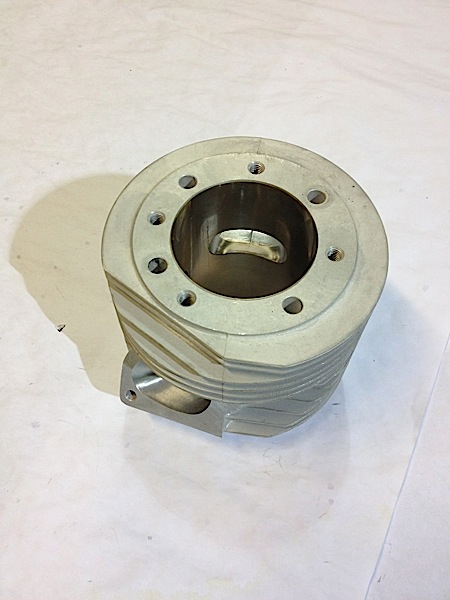
The RT cylinder is designed and machined with 4 extra 8mm stud holes, it’s not a standard conversion as the drop design works so well with no head gaskets blowing. The new MBgm versions do this conversion and its a belt and braces conversion
.png)
MB tuned inlet port to suit our new Shorty Reed block, this cylinder is tuned and prepared ready for Ceramic Plating
A modified MB RT cylinder with the Shorty Reed block fitted
A MB RT 255 reed inlet port, matched and flowed to a reed block, MRB1602, note two holes in the face, this was originally done for a LTH Reed block which is slotted and these were locating pegs to centralise the block, note the fins ground to clear the reed block, this is the only way we could make a reed block close to the inlet port
Mark Broadhurst, ask a question mark@mbscooters.co.uk



